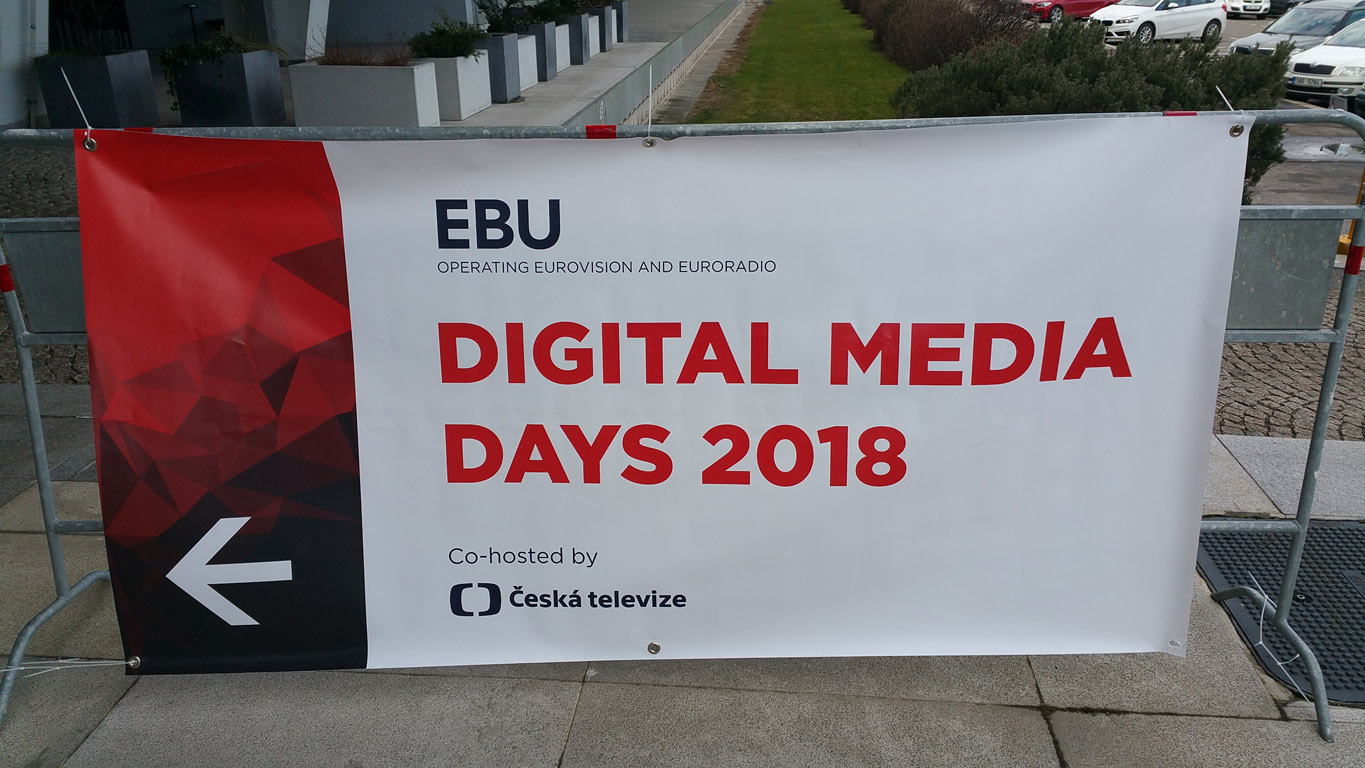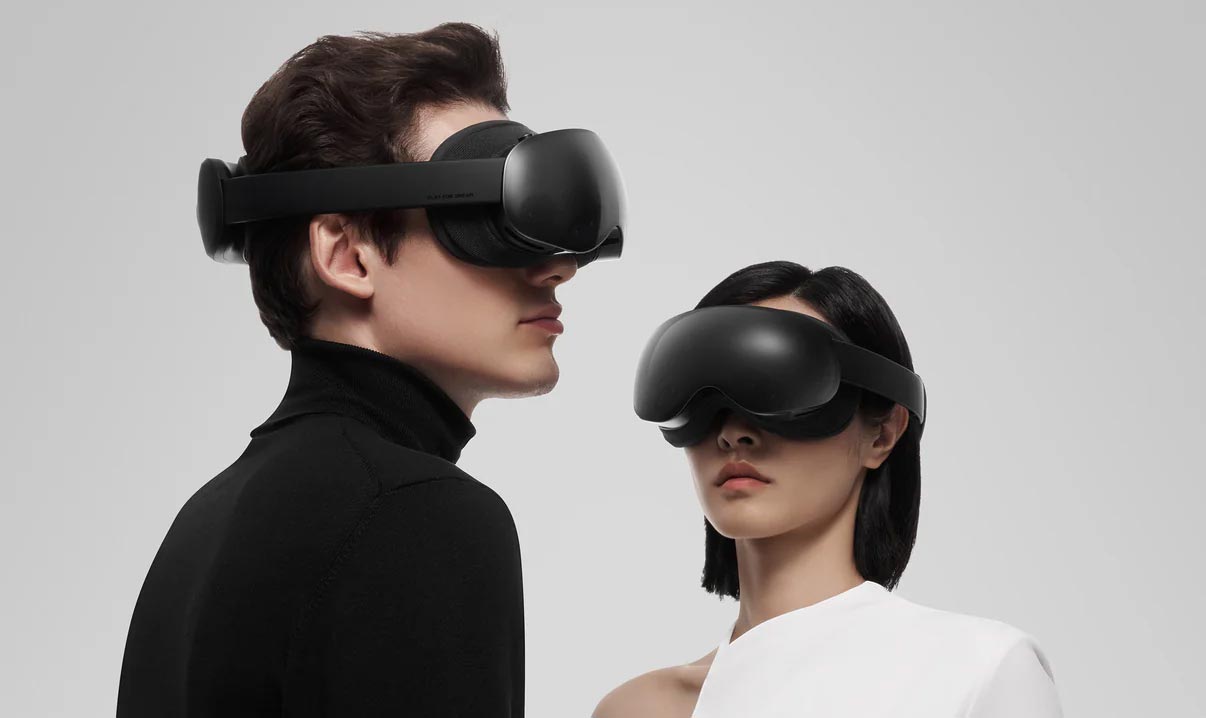What I’ve learned at the EBU Digital Media Days 2018
As I had already announced you in another post, on March 9th I’ve been in Prague to have a little talk at the EBU Digital Media Days. In this post, I want to tell you a bit how it has gone this experience and what I’ve learned from it.

How it has gone
First of all, I want to tell you that Prague is wonderful. It is something that a lot of friends already told me, but I didn’t believe until I actually saw it. There are a lot of things that deserve to be seen (for instance the Cathedral on the top of the city is… WOW) and to be eaten (like the trdelnik, that has the same amount of calories of two weeks of lunches and it is also so sweet to eat… it is a nice way to get fat). Max and me also met Louis, a very kind guys that hosted us in his home through Airbnb and that gave us a lot of suggestions that made our trip better. We had a wonderful time in the city… so, if you want to travel to a European city, Prague is surely a good place to go.

My experience at the EBU Digital Media Days 2018 has been awesome. First of all, I learned a lot from the people talking before and after me: some of them were from EBU or from Amazon and Sky… so, as you can see, we are talking about people that know well what they say and from which I could only learn interesting things. In this article, in fact, I will tell you about what I’ve learned from the speeches of the others. Regarding mine talk, I was a bit embarrassed of speaking among such important people, but I did the best that I could: I spoke about the context of AR and VR and provided insights on various headsets (like Oculus Go, Vive Pro, and Magic Leap) and on some notable VR experiences (like Robo Recall and Dear Angelica). My talk and my attitude of pretending that I knew what I was saying have been highly appreciated. I’ve received the compliments of Paola Sunna, the person at EBU that has invited me (thank you, sincerely) and I also exchanged some business cards with people working in the TV broadcasting environment. So, wow, we were very excited at the end… what a great day!

What I have learned
Here you are a collection of random info that I’ve learned during the event.
Television broadcasters and AR/VR
TV broadcasters are increasingly interested in these new technologies: one company that we have seen very active in this field is, for instance, BBC, that has produced the VR experience HOME. They have lots of ideas, but most of the times they can’t develop them because:
- They lack the money. And this is a bad news;
- The technology is still not ready (for instance HoloLens is still very rough as an AR glass);
- They have not the right expertise.
The three points combined create a great opportunity for us AR/VR consultants: we could help television broadcasters offering our expertise to create an experience that is affordable and at the same time appealing and that exploits the technical capabilities of the present time AR/VR devices. It is a market that has to be kept in mind, especially because they usually work through outsourcing.

Volumetric videos and 6 DOF videos
At a certain point, the technical director of Sky VR UK has provided us insights of the work that Sky is making with AR and VR technologies. They have an internal team dedicated to XR: they strongly believe in this technology.
It has been very interesting talking with him about volumetric videos and 6 DOF videos. Regarding the former, he talked about an experience they made with a boxeur: they had to shoot a volumetric recoding of his training for a 40 seconds trailer video. To create them they had to use an array of 106 cameras and the total created material was 700 TERABYTES. 700 Tera for just some minutes of recording, that was then cut to obtain the final 40 seconds. This means that volumetric video is an impressive technology, but still not feasible for many studios (keep in mind that at this moment there are only 3-4 companies in the world that can shoot them).
Regarding 6 DOF videos (videos where you can actually move in), he said that actually they are still not there and won’t be for a long time: even Paola Sunna, when talked at the end of the event, said that we won’t see them in our headsets at home until 2022. Then, why Alex from SLR and Mister President have told me that we’ll see them before the end of this year? Well, the reason is simple: it depends on what kind of 6 DOF videos we are talking about: if we want videos where we can move with room scale, we need to wait until 2022. But to have videos where you can just move a bit our head, they can be created using parallax distortion and they’ll be available very soon.
Amazon Sumerian characters
There has been a talk about Amazon Sumerian made by a guy from AWS. He introduced Sumerian and talked about the fact that it is incredible because it is integrated with all the services by Amazon… saying basically what I have already said in my review.
It has been interesting to discover how much Amazon has spent to create the two main characters of Sumerian, Preston, and Christine, that you can add your experience. Going from initial 2D sketches to the final animated 3D character, the expense has been $80000 for every single character! WHHAAAAAAT

It has been also very interesting to discover that not only these two characters are highly customizable, but also that Amazon will add more characters in future updates. Furthermore, it already allows you to add your personal avatar… if you have $80000 to create it :D. Amazon is investing a lot in characters because they are one of the truly powerful features of Sumerian: mixing them with Lex (the engine of Alexa) and Poll (Amazon’s text-to-speech service), you can truly give conversation superpowers to them.
VR interfaces
There was an interesting experience told by SWR television. They tried to put a 360 photo inside a TV program usually watched by elderly people and then let people call on the phone to navigate the photo by giving commands like “left”, “up”, etc… to ask them questions about the just explored panorama after they have seen it to win some prizes. The problem was that elderly people were not used to 360 videos, so the first person that called, started making a mess, navigating it so bad that she basically only saw the sky, so she wasn’t able to answer any questions, later on. The video was hilarious.
This teaches us to design the VR interface putting our user at the center: if he/she is a VR expert we can behave in a certain way… if it is the first time he/she uses the tool, we had better design something that is very very intuitive.
Brainstorming
There was a great brainstorming moment, when we had to start from the needs of the customer and then create an AR/VR app to solve the pain of him/her. It was a great moment because it made clear that when you create a product, you have to start with the customer and not from the technology or the solution. You have first to understand what is the pain of the customer and then solve it using the technology (an advice that also Mister President gave me).
We started from “how to make a routine moment extraordinary”, then chose a customer persona (12yo girl), the routine moment (eating at school) and then got a lot of interesting ideas on how to make an AR product to make it great (AR menu, heroes that eat with the girl, etc…). It was really a great moment that reminded me what is the right way to design stuff.

HoloLens camera
A man from 2DF told us that a possible application of Hololens is pairing it with a camera so that you can add some virtual overlays to the video without using a green screen. I’ve never tested HoloLens in such a setup but is surely an interesting possibility.
AR app design
In the end, there was some interesting AR app design advice from Wesa of Yle: he designed a horror app for iPad using ARKit. It is interesting that he, as me, hate those AR apps that are just “a 3d model on a plane” and wanted to create something compelling, so he and his team experimented a lot with the technology. He came up with these final pieces of advice:

I think that two of them are true gold:
- Try to understand if your app truly needs AR. If you blank the camera stream and the experience is the same as before, or even better than before, then you don’t need AR. If the real world doesn’t add any context to the virtual elements, your AR usage is just a gimmick. Otherwise, your AR use is perfect. The white camera stream test is something that every AR app developer should do;
- Design around the technology flaws: they chose a horror experience because current AR is glitchy and all the horror experiences are full of glitches, so they are a good match together.

And that’s it… this is what I’ve learned in these very interesting days… I hope you liked this article and that you’ve learned something from it as well. If this is the case, please share it to spread the learning 🙂
Disclaimer: this blog contains advertisement and affiliate links to sustain itself. If you click on an affiliate link, I'll be very happy because I'll earn a small commission on your purchase. You can find my boring full disclosure here.




BBC have done some stunning work in VR.
“The Turning Forest” and “BBC Earth: Life in VR” both on Daydream.
Also Guardian VR (from english newspaper guatdian) an awesome suite of different experience in solitary confinement, refugee, etc. especially the recent “Celestial bodies” with Sadler Wells dance company.
I agree, BBC is investing a lot in this tech: it has also made an AR app about historical elements. I think that I’ve tried its worst VR experience: it wasn’t even that bad, until the moment when I almost fall to the ground because I’ve lost balance because of the too much sickness!!
I think that it is exactly what the guy has done in Germany… but I also think that Microsoft has applied some “tricks” to that video of kipman to make it appear perfect… 😛 :P: 😛